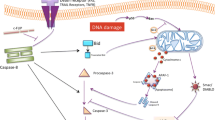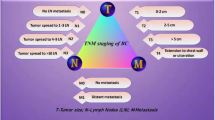Abstract
Salvia officinalis L. (sage) is one of the herbal plants frequently used in traditional medicine. Anti carcinogenic property of sage extract and the fact that it does not show toxic effect on normal cells, make this extract a proper candidate for cancer therapy. In order to assess the molecular mechanism underlying sage anticancer properties, the effect of sage hydro alcoholic extract was investigated on mouse mammary carcinoma cell line (4T1). Cultured cells were treated with different concentrations (0–1000 μg/mL) of Salvia officinalis extract for 24 h. Decrease in cell viability and increase in chromatin condensation were observed in a dose-dependent manner following treatment with sage extract. Most cultured cells were in the early stages of apoptosis in 100 μg/mL and in the late stages of apoptosis in 500 μg/mL of the extract. While Bax expression was increased significantly at 500 μg/mL of sage extract, no significant change was observed in the levels of Bcl2 expression in different concentrations of the extract compared to non-treated control. Therefore, Salvia officinalis hydro alcoholic extract shows cytotoxic and proapoptotic properties on mouse mammary carcinoma cells. Moreover, it seems that the induction of apoptosis in those cells is through increased in the ratio of Bax/Bcl2 as an apoptotic index.








Similar content being viewed by others
References
Baricevic D, Sosa S, Della Loggia R, Tubaro A, Simonovska B, Krasna A (2001) Topical anti-inflammatory activity of Salvia officinalis L. leaves: the relevance of ursolic acid. J Ethnopharmacol 75(2–3):125–132
Borenfreund E, Puerner JA (1985) Toxicity determined in vitro by morphological alterations and Neutral Red absorption. Toxicol Lett 24(2–3):119–124
Chen GQ, Shen Y, Duan H (2008) Anti-tumor effect and its mechanisms of ursolic acid on human esophageal carcinoma cell Eca-109 in vivo. Chin J Cancer Res 20(3):205–210
Cheng AC, Lee MF, Tsai ML, Lai CS, Lee JH, Ho CT, Pan MH (2011) Rosmanol potently induces apoptosis through both the mitochondrial apoptotic pathway and death receptor pathway in human colon adenocarcinoma COLO 205 cells. Food Chem Toxicol 49(2):485–493
Deeb SJ, El-Baba CO, Hassan SB, Larsson RL, Gali-Muhtasib HU (2011) Sage components enhance cell death through nuclear factor kappa-B signalling. Front Biosci 1(3):410–420
El-Mahdy MA, Zhu Q, Wang Q, Wani G, Wani AA (2005) Thymoquinone induces apoptosis through activation of caspase-8 and mitochondrial events in p53-null myeloblastic leukemia HL-60 cells. Int J Cancer 117(3):409–417
Elmore S (2007) Apoptosis: a review of programmed cell death. Toxicol Pathol 35(4):495–516
Elumalai P, Gunadharini DN, Senthilkumar K, Banudevi S, Arunkumar R, Benson CS et al (2012) Induction of apoptosis in human breast cancer cells by nimbolide through extrinsic and intrinsic pathway. Toxicol Lett 215(2):131–142
Galluzzi L, Kepp O, Vander Heiden MG, Kroemer G (2003) Metabolic targets for cancer therapy. Nat Rev Drug Discov 12:829–846
Hadri AE, Gomez del Rio MA, Gonzalez Coloma JSA, Idaomar M, Ozonas BR, Gonzalez JB, Sánchez Reus MI (2010) Cytotoxic activity of α-humulene and trans-caryophyllene from Salvia officinalis in animal and human tumor cells Anales De La Real. Acad Nac De Farm Inst De Espana 76(3):343–356
Hammadeh ME, Al-Hasani S, Stieber M, Rosenbaum P, Kupker D, Diedrich K, Schmidt W (1996) The effect of chromatin condensation (Aniline Blue staining) and morphology (strict criteria) of human spermatozoa on fertilization, cleavage and pregnancy rates in an intracytoplasmic sperm injection programme. Hum Reprod 11(11):2468–2471
Hiraga T, Ueda A, Tamura D, Hata K, Ikeda F, Williams PJ, Yoneda T (2003) Effects of oral UFT combined with or without zoledronic acid on bone metastasis in the 4T1/luc mouse breast cancer. Int J Cancer 106(6):973–979
Janicsak G, Zupko I, Nikolovac MT, Forgo P, Vasas A, Mathe I, Blunden G, Hohmann J (2011) Bioactivity-guided study of antiproliferative activities of Salvia extracts. Nat Prod Commun 6(5):575–579
Keshavarz M, Mostafaie A, Mansouri K, Bidmeshkipour A, Mohammadi Motlagh HR, Parvaneh SH (2010) In vitro and ex vivo antiangiogenic activity of Salvia officinalis. Pharmacol Pharm Med 24(10):1526–1531
Kim JY, Kim JS, Seo YR, Park JHY, Choi MS, Sung MK (2014) Carnosic acid suppresses colon tumor formation in association with anti-adipogenic activity. Mol Nutr Food Res 58(12):2274–2285
Kontogianni VG, Tomic G, Nikolic I, Nerantzaki AA, Sayyad N, Stosic-Grujicic S et al (2013) Phytochemical profile of Rosmarinus officinalis and Salvia officinalis extracts and correlation to their antioxidant and anti-proliferative activity. Food Chem 136(1):120–129
Mehta RG, Murillo G, Naithani R, Peng X (2010) Cancer chemoprevention by natural products: how far have we come? Pharm Res 27(6):950–961
Monsefi M, Azarbahram Z, Abedian M, Ashraf MJ (2015) Salvia officinalis induce alveolar bud growing in adults female rat mammary glands. Avicenna J Phytomedicine 5(6):560–567
Russo A, Formisano C, Rigano D, Senatore F, Delfine S, Cardile V, Rosselli S, Bruno M (2013) Chemical composition and anticancer activity of essential oils of Mediterranean sage (Salvia officinalis L.) grown in different environmental conditions. Food Chem Toxicol 55:42–47
Sertel S, Eichhorn T, Plinkert PK, Efferth T (2011) Anticancer activity of Salvia officinalis essential oil against HNSCC cell line (UMSCC1). HNO 59(12):1203–1208
Slamenova D, Masterova I, Labaj J, Horvathova E, Kubala P, Jakubikova J, Wsolova L (2004) Cytotoxic and DNA-damaging effects of diterpenoid quinones from the roots of Salvia officinalis L. on colonic and hepatic human cells cultured in vitro. Basic Clin Pharmacol Toxicol 94(6):282–290
Steward BW, Kleihues P (eds) (2003). World cancer report. IARC Press, Lyon, pp 188–193
Tsai CW, Lin CY, Lin HH, Chen JH (2011) Carnosic Acid, a rosemary phenolic compound, induces apoptosis through reactive oxygen species-mediated p38 activation in human neuroblastoma IMR-32 Cells. Neurochem Res 36(12):2442–2451
Xavier PR, Lima CF, Fernandes-Ferreira M, Pereira-Wilson C (2009) Salvia fruticosa, Salvia officinalis, and Rosmarinic acid induce apoptosis and inhibit proliferation of human colorectal cell lines: the role in MAPK/ERK pathway. Nutr Cancer 61(4):564–571
Zare Shahneh F, Valiyari S, Baradaran B, Abdolalizadeh J, Bandehagh A, Azadmehr A, Hajiaghaee R (2013) Inhibitory and cytotoxic activities of Salvia Officinalis L. extract on human lymphoma and leukemia cells by induction of apoptosis. Advanced. Pharm Bulletin 3(1):51–55
Acknowledgements
This study was financially supported by the Vice-Chancellery for Research of Shiraz University.
Author information
Authors and Affiliations
Contributions
All authors participated in the design of the study and interpretation and analysis of the data. SBM, MM, and RM conducted the experiments, MM and RM supplied the reagents, and SBM wrote the manuscript.
Corresponding author
Rights and permissions
About this article
Cite this article
Moghadam, S.B., Masoudi, R. & Monsefi, M. Salvia officinalis Induces Apoptosis in Mammary Carcinoma Cells Through Alteration of Bax to Bcl-2 Ratio. Iran J Sci Technol Trans Sci 42, 297–303 (2018). https://doi.org/10.1007/s40995-018-0496-x
Received:
Accepted:
Published:
Issue Date:
DOI: https://doi.org/10.1007/s40995-018-0496-x




